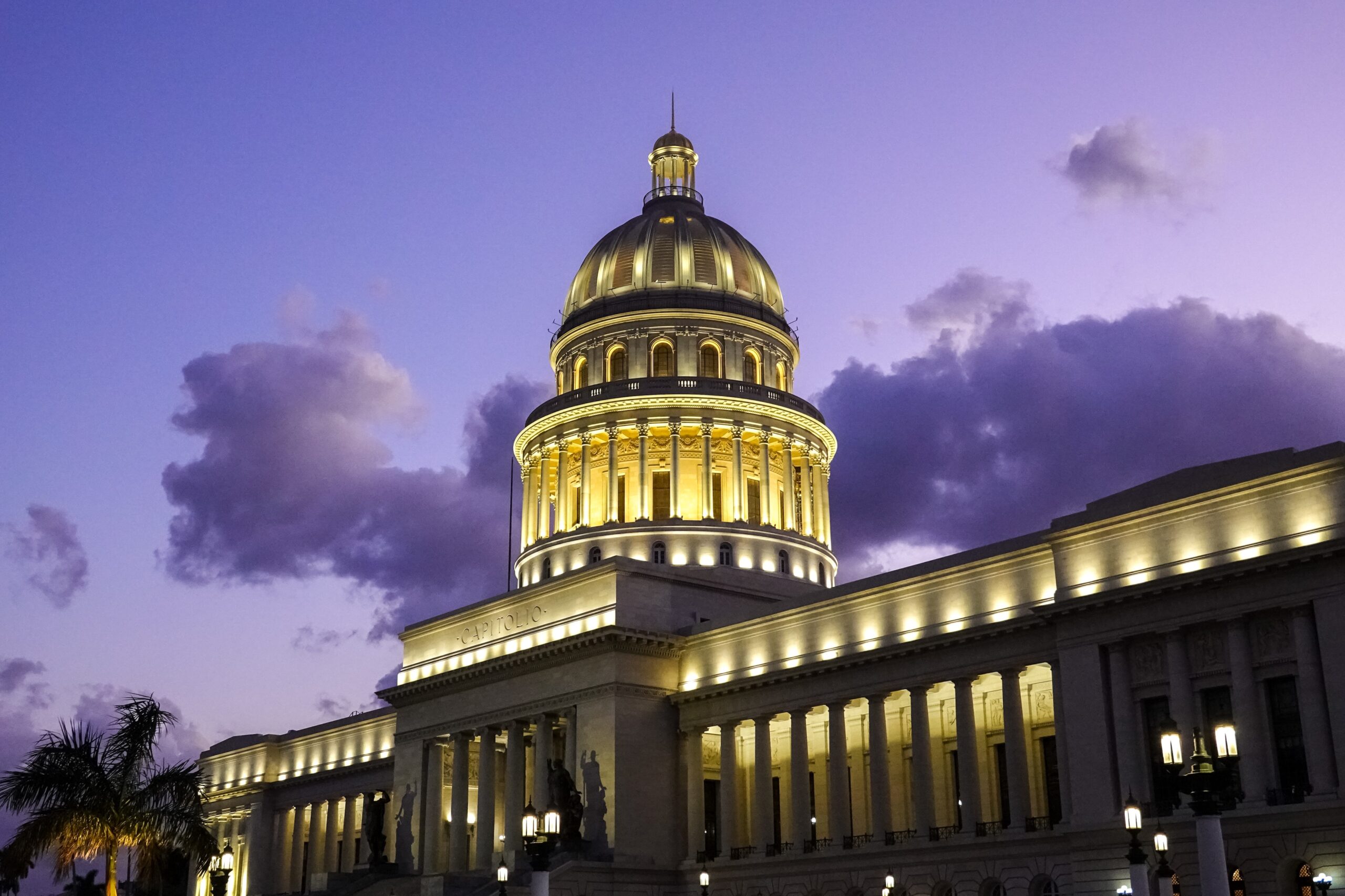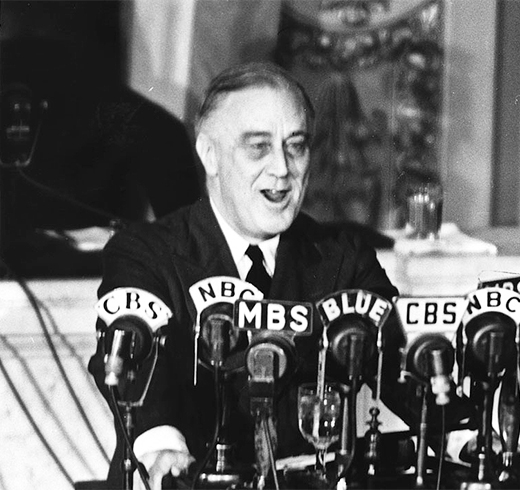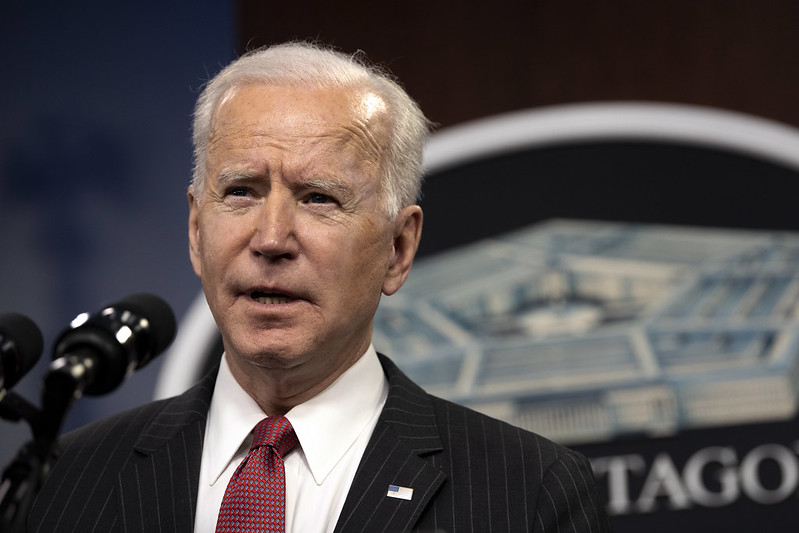(WASHINGTON) – Climate scientists continue to warn policymakers about the impending threat of climate change, with recent interagency reports highlighting new predictions for rising sea levels. During the State of the Union address, President Biden renewed calls to convert the country’s energy infrastructure to clean technologies by highlighting how his new energy proposals will cut costs for working Americans and create new jobs in the sector.
Previously, Biden had pledged an energy transition to subvert the climate catastrophe, setting targets for net-zero greenhouse gas emissions by no later than 2050. While most policymakers are shifting their focus to the foreign policy crisis unfolding in Ukraine, Biden’s Build Back Better (BBB) plan may remain stalled in the U.S. Senate, after Senator Joe Manchin failed to support the bill back in December. The sinking of the bill has similarly stalled Biden’s campaign promise for millions of clean energy jobs.
“We’ll build a national network of 500,000 electric vehicle stations, begin to replace poisonous lead pipes – so every child – and every American – has clean water to drink at home and at school,” a defiant Biden remarked at the State of the Union on Tuesday.
Still, the U.S. remains the world’s leading oil producer, making up around 20% of global market share in 2020. Biden aims to shift the U.S. away from oil production and into clean energy markets, and especially strategic move amid the sector’s volatile spell. American regulators can inch closer towards this goal by promoting and investing in green technology across various sectors including the electric vehicle market, providing tax breaks for green start-ups, and expanding U.S. energy infrastructure to provide more sustainable energy development.
![Vice President Kamala Harris and House Speaker Nancy Pelosi sit behind President Joe Biden during his State of the Union address on Tuesday, Mar. 1, 2022. [credit: whitehouse.gov]](https://theclick.news/wp-content/uploads/cache/2022/03/SOTU-2022_8/585722036.png)
![First Lady Jill Biden and special guests applaud Facebook Whistleblower Frances Haugen's introduction during Biden's State of the Union address on Tuesday, Mar. 1, 2022. [credit: whitehouse.gov]](https://theclick.news/wp-content/uploads/cache/2022/03/SOTU-2022_standing-ovation_opiod-fight/2377711373.png)
![Outgoing supreme court justice Stephen Breyer is acknowledged during Biden's State of the Union address on Tuesday, Mar. 1, 2022. [credit: whitehouse.gov]](https://theclick.news/wp-content/uploads/cache/2022/03/SOTU-_2022-honors-Justice-Breyer/2679051089.png)
![First Lady Jill Biden applauds her husband during his State of the Union address before the joint session of Congress on Tuesday, Mar. 1, 2022. [credit: whitehouse.gov]](https://theclick.news/wp-content/uploads/cache/2022/03/SOTU-2022_4/3398909188.png)
![Minority leader Mitch McConell (R-KY) sits between Bill Cassidy (R-Louisiana) and EPA administrator Michael Regan at Biden's Statee of the Union address on Tuesday, Mar. 1, 2022. [credit: whitehouse.gov]](https://theclick.news/wp-content/uploads/cache/2022/03/SOTUS-_2022_3/120247430.png)
![Select members of the military sit in Congress during Biden's State of the Union address on Tuesday, Mar. 1, 2022. [credit: whitehouse.gov]](https://theclick.news/wp-content/uploads/cache/2022/03/SOTUS-2022-_g/2628748513.png)
Gallery: Scenes from Biden’s State of the Union. By Souhilla Moore and Theresa Boersma
As long as the BBB plan remains stuck in the Senate, these initiatives exist as intangible concepts. The lack of legislative support for the program will reflect shortcomings in areas prime for policy renewal. For example, this past month, the U.S. postal service announced plans to invest $11.3 billion on at least 150,000 gas-powered delivery vehicles for its new fleet of trucks meant to service the freightage over the next decade. The postal service cited the lack of available funding from the federal government for an all-electric fleet as a major factor in their investment decision. The EPA, however, refutes this claim.
“Already, clean energy is the biggest job creator in our country’s energy sector, employing almost three times as many workers as the fossil fuel industry. The Build Back Better agenda offers tax incentives to further boost job creation and expand the renewable energy industry, especially in low-income communities, and support a just transition for communities that have relied on fossil fuel revenue and jobs in the past,” states John Bowman, the managing editor for government affairs at the Natural Resources Defense Council, a non-profit advocacy group that bears $693 million in assets.
Biden’s focus on the global energy transition seems to understand the gravity of the moment. The U.S. has returned to the Paris Climate Agreement, positioning climate forward policymakers in the right direction. The administration was at the forefront of COP26 after four years of American climate denial by the Trump administration. The U.S. also has repeatedly applied pressure on Germany to halt financing for the Nord Stream 2 oil pipeline from Russia, something that came to fruition after Russia’s invasion of Ukraine.
However domestically, the U.S. continues to hit speed bumps on its own transition.
Just this week, the U.S. Supreme Court began oral arguments on whether the federal government has the ability to regulate the power sector. Perhaps Biden’s most tangible domestic energy policy to date was his opening of the oil reserve to attempt to curb rising oil costs in January. In lieu of this recent action and the tension escalating between Ukraine and Russia, Biden announced that America will release 30 million barrels from its Strategic Petroleum Reserve in his union address.
There remains a dichotomy between the administration’s hopes for a domestic energy transition and their actions. Yet, Biden’s optimism for a U.S. clean energy future remains unflappable.
“Let’s provide investments and tax credits to weatherize your homes and businesses to be energy efficient and you get a tax credit; double America’s clean energy production in solar, wind, and so much more; lower the price of electric vehicles, saving you another $80 a month because you’ll never have to pay at the gas pump again.”
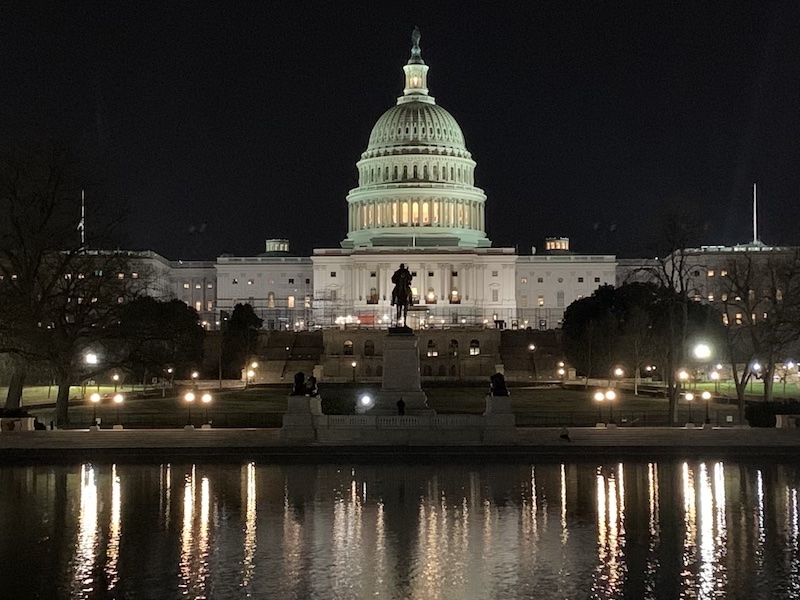
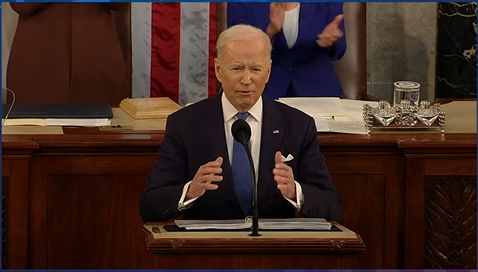
![The joint sessions of Congress give a standing ovation after Biden's State of the Union address on Tuesday, Mar. 1, 2022. [credit: whitehouse.gov]](https://theclick.news/wp-content/uploads/cache/2022/03/SOTU-2022/4047910816.png)
![President Joe Biden speaks before a joint session of Congress during his State of the Union address on Tuesday, Mar. 1, 2022. [credit: whitehouse.gov]](https://theclick.news/wp-content/uploads/cache/2022/03/Biden-2022-SOTU/1502956751.png)
